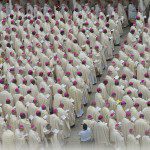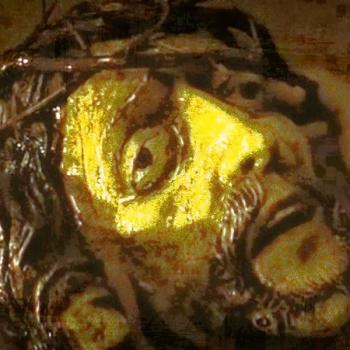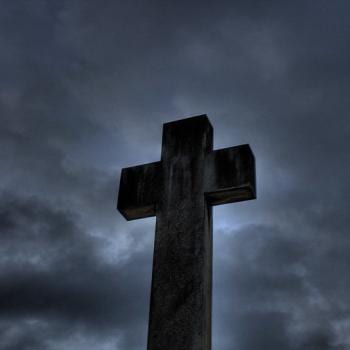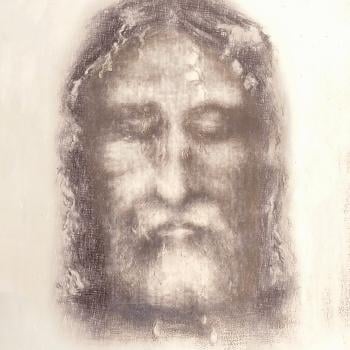The Bible ends with a poignant verse.
Come Lord Jesus, cries in a voice that resounds in the heart of every Christian.
Two thousand years ago, the conquered children of Israel looked forward to Him, even though they didn’t fully understand Who He was, and they certainly misunderstood what He would do.
The prophecies of the Christ begin in Genesis when God tells the serpent He will set enmity between the serpent and the Woman, that she would crush his head, and he would strike at her heel. This was not, note, a prophecy of Eve’s life, but of Mary, the New Eve whose quiet birth, unmarked as it was by the larger world, was the door opening on our salvation.
With Mary’s Immaculate Conception, the primal hope of the garden before the fall reawakened in human existence. It was given back to us as a free and totally unmerited gift by God. It set the stage for the coming of His Son, the long hoped-for Messiah.
Prophecies of Jesus began at the beginning, in the Garden, and are woven throughout the many thousands of years of history that tell the tales of His family in the book we call the Old Testament. It is the story of God, raising up a people by first calling one man to leave his home and go out into the wilderness.
It began, as these things always do, with a family; in Abraham’s case, a troubled and often sinful family that nevertheless trusted God. Not everything Abraham did was right, but he believed the Lord’s promises, and Scripture tells us that God “reckoned that to him as righteousness.”
There is a message in this for all of us. That message is simply that we need to trust God and follow Him without placing the unreachable burden of perfection on ourselves. Righteousness is found in trying to do God’s will and trusting our lives and our salvation to His mercy. Whatever we lack in ourselves and our efforts, He will supply. All we need to do is trust Him and do our best.
But how does God supply the lacks? How does He reach across the unfathomable gulf between our finiteness and His infinite transcendence? He did it by doing the unthinkable, by taking on human flesh, being born of a young woman and living, suffering and dying as one of us. Jesus was foretold over and over again throughout the Old Testament, but, as Steve Jobs famously said, it’s impossible to connect the dots going forward; you can only connect them looking back.
In the case of the many prophecies of Jesus the Christ, the prophecies of His second coming are intertwined with those of His first coming. The triumphant Lord of all history is foretold alongside the Suffering Servant of Calvary. Connecting those dots going forward was as confounding to the people of that day as connecting the dots of the Second Coming are to us. Theories and theology abound, and all of them are, to a great extent, educated guesses.
People of Jesus’ day skipped over the Suffering Servant prophecies and misinterpreted the salvation prophecies to weave together an interpretation of a warrior king who would make the nation of Israel into the dominant world power. They tried to connect the dots going forward and came up with a political interpretation which, while it comforted them in their sufferings as a conquered people who occupied the bottom rung on a significant trade route for the Roman Empire — The trade route mattered to the Romans. The people who lived there, not so much. — was wildly inaccurate.
They took comfort in the promised messiah of their own interpreting who would place his foot on the back of the Roman neck and make the Israelites the rulers of the world. Although this inaccurate interpretation comforted them in their daily problems, it led them into the mistake of missing the real Messiah when He actually came to them.
Nothing in their grandiose imaginings came close to the lowly carpenter’s son, born of a virgin in a stable and then forced to flee into exile soon afterwards. They were unprepared for parables and stories urging them to love and care for one another and talking about a Kingdom that would grow like a tiny mustard seed or the leaven in bread into something they could not fathom.
The idea that the Messiah would be executed like a common criminal and then rise from the dead only to leave the whole enterprise of Kingdom building in the hands of 12 men chosen from ordinary fishermen and tax collectors made no sense according to the false interpretation they had believed for so long.
And so the cornerstone of the new Kingdom became the stumbling block for God’s chosen ones. They, the apple of God’s eye, the ones from whom salvation comes, turned aside from their own salvation while the prostitutes and sinners, the rabble and riff-raff of outsiders, walked right in.
Advent is the season we set aside to consider these things. We know about the first coming of Christ. The dots are in our past, where we can see the pathway they form with clarity. We have the Church to explain these things to us, and we have 2,000 years of Christian teaching to make them clear.
So long as we confine our Advent meditations to mulling over the First Coming of Christ and think about our personal piety and our need for repentance and conversion, we are on fairly solid ground. We know what is expected of us as His followers. We know the story of God made man for our salvation.
But we are not at the end of the story. We still await the fulfillment of the prophecies. We are somewhere along the long row of dots that connect the planting of the mustard seed and the final harvest. We are, all of us, awaiting the day when He comes again.
Perhaps more to the point, we are traveling along our own road of life, journeying from birth to grave. We know — know — that our end of time is always imminent. One day our souls will be required of us, and none of us knows the day or the hour that will happen. That will be our end of time, when we go to Him, even if He has not yet returned to us.
Advent is the prophetic pot, simmering. It is a few weeks set aside for us to contemplate the mystery and the majesty of Christ coming. We have the history of His First Coming and the probably seriously misunderstood promises of His Second Coming, all intertwined with the certainty of our departing and going to Him.
We can’t — any of us — connect the dots looking forward. But we don’t have to. All we have to do is follow in the footsteps of Abraham, or Mary or Stephen or Priscilla or Paul or the woman with the hemorrhage or the blind man who would not deny Him and was put out of the Temple for his fealty. All we have to do is just believe Him and follow Him and trust that, even if the dots don’t connect in meaningful ways for us looking forward, they will be form a pattern of salvation when we look back.
Advent is a good great time to consecrate however much of our lives we have left to His Mercy. Trust and obey the old hymn says. There is no other way to be happy in Jesus.
Truer words were never spoken.
Spend a few minutes this advent contemplating the dots going forward into your eternity as well as those going back to the Immaculate Conception and to the stable. Are we living in the End Times? Perhaps. But in truth, it doesn’t much matter if we are.
Each and every one of us is living in his or her “end times” every single day. There is absolutely nothing to fear in this if you trust and obey. God’s mercy, which was poured out on all humanity from the wounded side of Jesus, is greater than our weakness, stronger than our failures, more loving than all our fears.
Just put your hand in His and let Him lead you Home. There is no other way.












